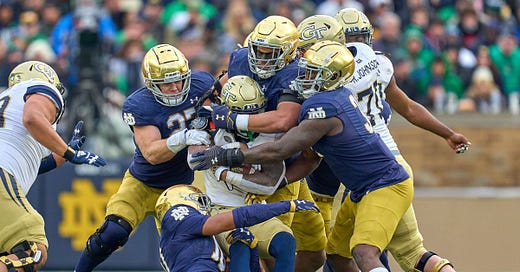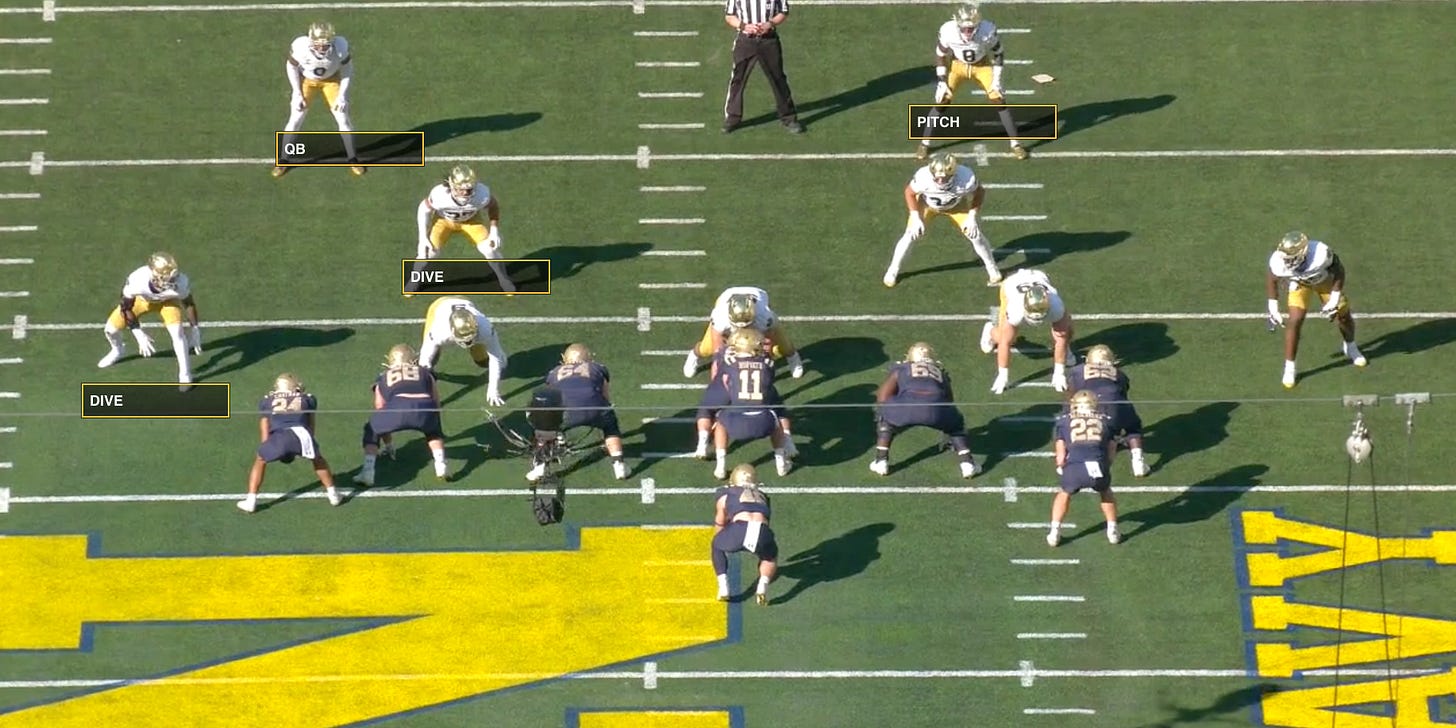How Notre Dame Defended Navy's Option Game
Navy entered the matchup averaging 44 points per game over their previous six contests, but Notre Dame’s defense held them to just 14. The key to the Irish’s success? A disciplined and well-executed plan to neutralize the triple option. Notre Dame mixed up their defensive fronts, including one particularly unique look, and played with the relentless effort required to stop an offense built on deception and precision. In this article, we’ll break down the various tactics the Irish used to stifle an attack that has been a nightmare for so many defenses.
Veer
A key component of Notre Dame’s defensive game plan was what I call the “Hex” front, featuring two 2i techniques (inside shade of the guard) and two 4 techniques (head-up on the tackle). This alignment is a nightmare for an option offense built around angle and down blocks. With defensive tackles and ends, or in some cases, linebackers, positioned directly over the guards and tackles, Navy struggled to generate the down blocks needed to open up rushing lanes. By disrupting the foundation of the option’s blocking scheme, Notre Dame forced Navy into uncomfortable situations all game long.
On this play, Notre Dame shifts their front by NOC’ing (New Offensive Center) to their right, but they remain effectively in the Hex front. Navy runs Veer, but they struggle to execute their blocking assignments, specifically working to the play side linebacker. That linebacker takes advantage, squeezing through the C-gap. Meanwhile, the safety plays his role to perfection, initially sitting as a quarterback player before triggering late to the dive, finishing the play with a tackle.
On this rep, Navy attempts to option off the 4-tech, but he single-handedly blows up the play, managing to tackle both the dive and then the quarterback. While that level of disruption is rare, it highlights the physical dominance Notre Dame played with up front.
It’s worth noting that safety #8 was assigned as the quarterback player and attempted to play both the quarterback and pitch, but struggled to make an impact. However, the interior linebacker did do excellent job scraping over the top to take away the pitch. This rep showcases how Notre Dame didn’t just sit in one static assignment structure but constantly changed the quarterback and pitch keys to keep Navy off balance.
Veer from the Tite Front
On this play, Notre Dame defends Veer using a Tite front, adjusting their option responsibilities once again. The overhang and interior linebacker take the dive, while the safeties are tasked with playing the quarterback and pitch. This is another example of how Notre Dame kept Navy off balance by constantly altering the read keys.
What stands out here is Notre Dame’s decision to assign the safeties to the quarterback and pitch responsibilities instead of using other second-level defenders. This adjustment allowed the Irish to play more aggressively inside while still keeping speed on the perimeter.
Below is another example of this two-safety option fit, with the backside safety chasing down the pitch from depth, which was a key factor in limiting Navy’s ability to turn the corner.





